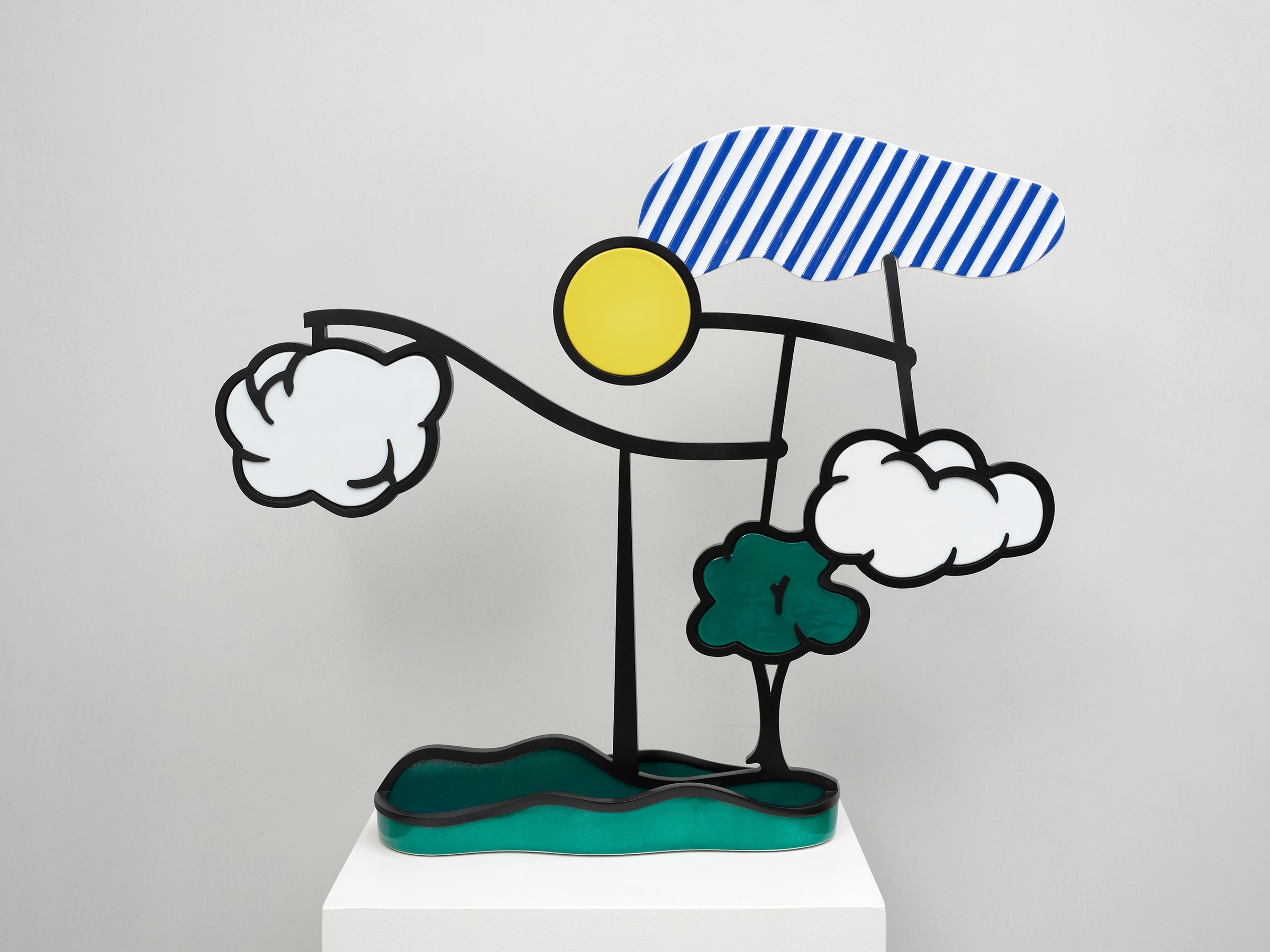Roy Lichtenstein

In Sculpture, Lichtenstein reimagines the genre of landscape painting first as simplified image and then as spatial form. A yellow disk for a sun, two cartoon clouds; no longer a pastoral idyll but a comic book scene. The heavy outlines and reduced palette are unmistakably Lichtenstein, as too is the formless shape of striped sky. A notable absence: the Ben-Day dots. The work appears disinterested in assuming a spatial form and remains largely flat – as if a painting had become detached from its canvas, left standing without substrate. Only its medium betrays its aspirations. Sculpture, like most of Lichtenstein’s works, is “determinedly egoless” (in critic Holland Cotter’s words), the artist all but absent in its fabrication. There are no gestural marks here, no sentiment; only the cool rigour of a man who spent a lifetime perfecting industrial mimicry, fluent in the graphic codes of commerce.
b.1923, New York; d.1997, New York
Roy Lichtenstein needs little in the way of introduction. That he so deftly claimed the anonymous style of print media and made it his own – displacing the reference with his image of it – has lent him lasting fame. He is remembered now as one of the vanguards of Pop Art, his early dalliance with Cubism and Abstract Expressionism conveniently forgotten. The works that made him famous – those of the Ben-Day dots and flat colours – shared AbEx’s preoccupation with form but none of its feeling, being, in the artist’s words, “anti-contemplative, anti-nuance, anti-getting-away-from-the-tyranny-of-the-rectangle, anti-movement and anti-light, anti-mystery, anti-paint-quality, anti-Zen, and anti- all of those brilliant ideas of preceding movements which everyone understands so thoroughly.'' Instead, Lichtenstein's was a rule-bound art of narrow range – “My work is, after all, a kind of straitjacket.” It was his precision, his exactitude, which led one reviewer to remark his art looked “wicked, ironic and freeze-dried, as if manufactured.” The sentiment was not uncommon. Fellow artist Richard Hamilton wrote that every image Lichtenstein touched was “reduced to the same kind of cliché by the syntax of the print.” In his choice of subject, however, Lichtenstein found lasting popularity, quoting advertisements, comic books, and later, art history; those images pleasing in their familiarity and design, images already mass-produced remade once more in paint.